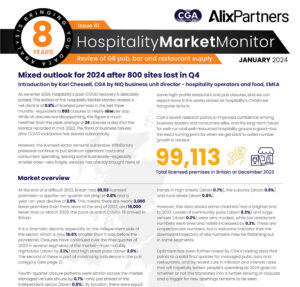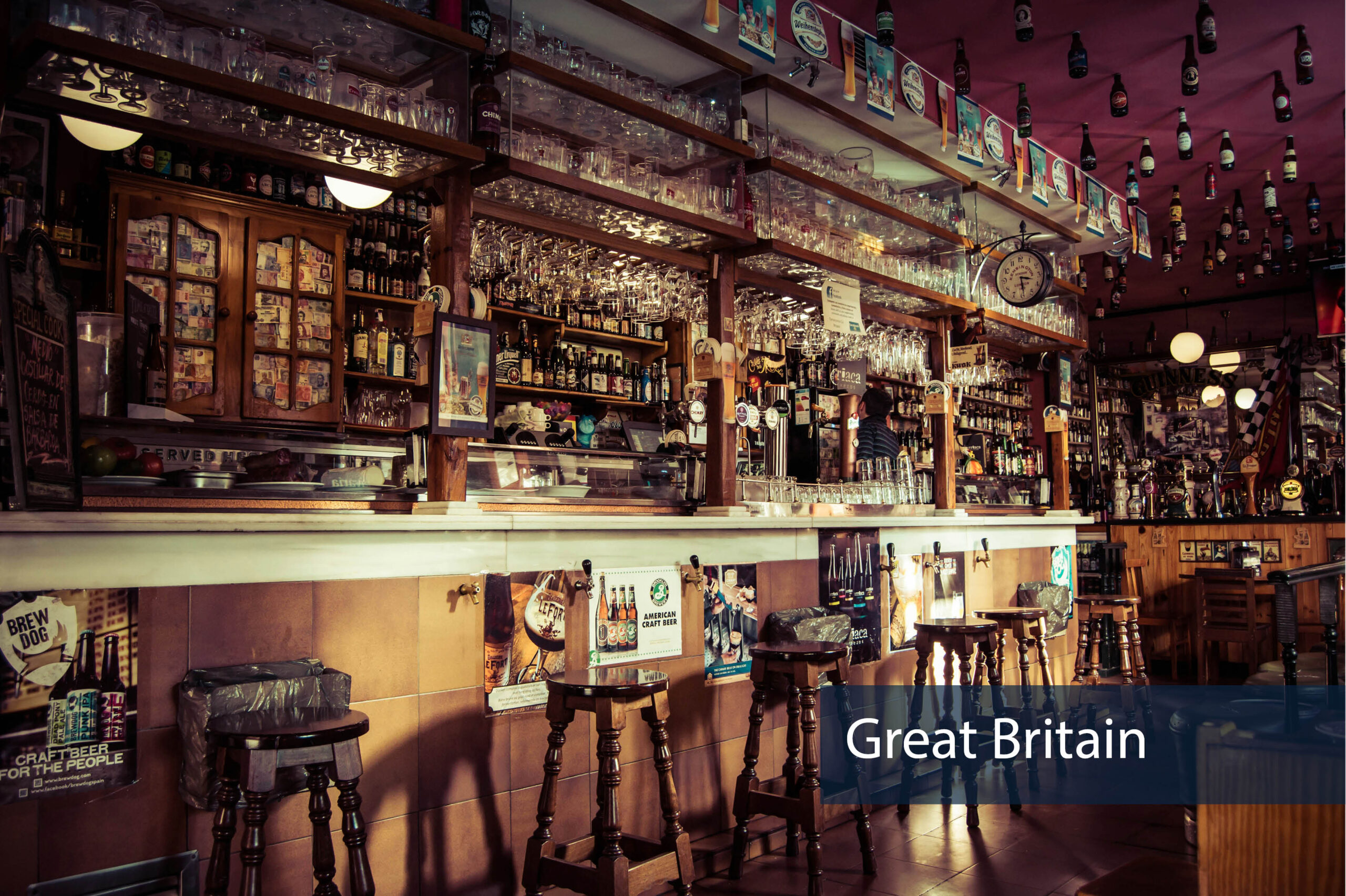
The figure is equivalent to 803 net closures in three months, or nearly nine per day. It represents an acceleration of closures from the third quarter of last year, when numbers fell by only 0.3%—but it is much healthier than the average of 24 closures a day that the Monitor recorded in mid-2022, when post-COVID business failures were at a peak.
The Hospitality Market Monitor from CGA and AlixPartners shows Britain had 99,113 licensed premises at December 2023—nearly 3,000 fewer than 12 months earlier, and 16,000 fewer than at March 2020, the point at which COVID-19 arrived in Britain. The independent sector has been hit particularly hard, with numbers falling by a sixth (16.6%) since early 2020.
The latest edition of the Hospitality Market Monitor has a special focus on the pub sector, where the number of premises has plunged by 43.6% over the last 20 years. It indicates that food-led pubs have been relatively resilient, with a 7.6% drop since March 2020, while community and high street pubs have dipped by 11.8% and 11.2% respectively. This reflects the long-term shift in the way people use pubs, and a change in focus from drinking out to eating out. Managed pub groups have achieved growth of 4.2% in that time, while independents (down 14.1%) and leased operators (down 14.4%) have found it harder to recover from COVID lockdowns.
Karl Chessell, CGA by NIQ’s director – hospitality operators and food, EMEA, said: “Given all the pressures on hospitality in recent months, it is no surprise to see more contraction in site numbers in late 2023. More closures can be expected in the coming months as inflation and labour issues continue to put strain on businesses, and independent operators are particularly vulnerable. However, CGA’s data points to solid trading for managed pubs, bars and restaurants, and likely drops in inflation and interest rates will hopefully ease costs and loosen people’s spending as 2024 goes on. Whether or not this leads to a slowing of closures and a trigger for new openings remains to be seen.”
Graeme Smith, AlixPartners’ managing director, said: “Prevailing economic conditions meant 2023 was a difficult year for many hospitality and leisure businesses. However, it was and clearly remains an uneven market. Well capitalised, well-run establishments in resilient parts of the market enjoyed continued growth through 2023, whereas smaller independent businesses struggled to absorb the increase in operating costs.
While the long-term headline-grabbing pub closure rates are on the face of it shocking, they speak to a societal shift, from drinking-out to more food-led occasions. This has happened amid a 20-year structural expansion in food venues across the country. It is a hospitality mega-trend of the first quarter of this century. The other material shift in behaviour in recent times is that of young consumers moving away from large late-night venues, which has left this segment of the market facing a challenge to adapt.
As we head into 2024 the outlook looks brighter. With inflation pressures easing and financing costs looking like they have peaked, many operators are looking forward to a more profitable year ahead.”
The Hospitality Market Monitor from CGA by NIQ and AlixPartners provides exclusive quarterly analysis of the licensed sector across Britain, with breakdowns of openings and closures by region, channel, tenure and more. Its expert analysis of trends and developments helps operators, suppliers and investors assess opportunities and challenges across the sector. Download the full report here.



 Karl Chessell, CGA by NIQ’s director – hospitality operators and food, EMEA, said: “Given all the pressures on hospitality in recent months, it is no surprise to see more contraction in site numbers in late 2023. More closures can be expected in the coming months as inflation and labour issues continue to put strain on businesses, and independent operators are particularly vulnerable. However, CGA’s data points to solid trading for managed pubs, bars and restaurants, and likely drops in inflation and interest rates will hopefully ease costs and loosen people’s spending as 2024 goes on. Whether or not this leads to a slowing of closures and a trigger for new openings remains to be seen.”
Karl Chessell, CGA by NIQ’s director – hospitality operators and food, EMEA, said: “Given all the pressures on hospitality in recent months, it is no surprise to see more contraction in site numbers in late 2023. More closures can be expected in the coming months as inflation and labour issues continue to put strain on businesses, and independent operators are particularly vulnerable. However, CGA’s data points to solid trading for managed pubs, bars and restaurants, and likely drops in inflation and interest rates will hopefully ease costs and loosen people’s spending as 2024 goes on. Whether or not this leads to a slowing of closures and a trigger for new openings remains to be seen.”